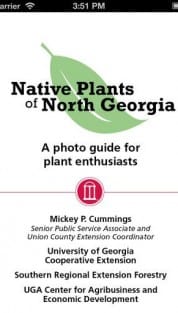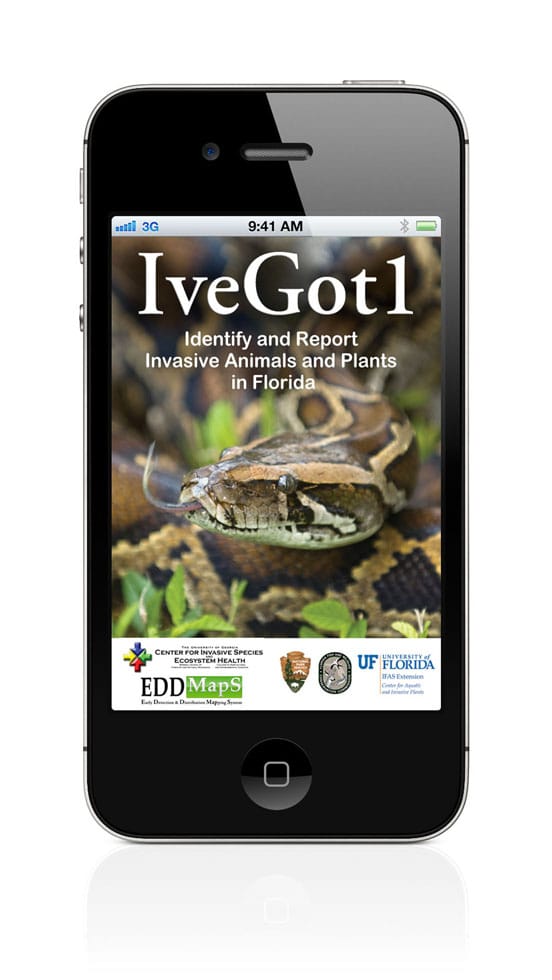Merritt Melancon is a news editor with the University of Georgia College of Agricultural and Environmental Sciences.
For decades families have relied on NOAA weather radios to alert them to hazardous weather conditions near their homes. Updates in technology now give the public options for staying abreast of weather conditions while on the go.
Dozens of smartphone apps and mobile phone alert services now allow you to track storms and receive emergency alerts even if you’re away from your weather radio or TV.
“People should definitely have some kind of notification that can provide them with warning of incoming severe weather when they are outside away from television,” said University of Georgia agricultural climatologist Pam Knox.
Knox notes that while many communities maintain emergency alert sirens, people may not always be where they can hear the sirens when an emergency strikes – especially if they live in a rural area.
Since most people keep their phones with them — while in the car, in the garden or on a hike. These news apps and services can provide life-saving advanced notice when a storm is approaching, Knox said.
The new apps generally fall into two categories: alert services that send texts or emails to subscribers when severe weather is on the horizon and apps that use push alert notifications (whistles, buzzers, sirens) to inform you of bad weather based on your current location.
Alerts by text
Many municipalities and counties are using text alert systems, like Nixle, to alert the public to everything from icy roadways and serious traffic accidents to missing people. For the most tailored information, mobile phone users may want to check with their local police or fire departments for information on local systems.
Mobile phone users may also receive wireless emergency alert text messages through their cell phone provider. These are alerts sent out locally by the National Weather Service and local emergency management personnel. Phone users should check with their carrier to configure their phone to accept these alerts. Visit www.ctia.org/wea for more information on the system.
Paid services are also available to deliver emergency alerts to cell phones via text. Free services are provided by commercial weather services like The Weather Channel, which delivers daily forecasts.
Cell phone users can also sign up for a wide range of text alerts from FEMA. Most deal with disaster preparedness, helping people find shelter or assistance after a disaster strikes. Subscribe now at www.fema.gov/text-messages to be prepared for severe thunderstorm and tornado season.
Weather alert apps
The second option for using your cell phone as an emergency alert device is to download one of the many available weather alert apps. There are several options to chose from at the Apple’s App Store and Android’s Google Play.
Accuweather.com, The Weather Channel, Ping4alerts, Weather Underground and The Red Cross offer free apps that will cause cell phones to buzz, ring or vibrate when the National Weather Service issues a severe weather alert.
The Red Cross alert apps are event specific. They send out audible alerts only when tornado or hurricane warnings have been issued. Due to their serious nature, these alerts are sent more infrequently. Red Cross apps also provide disaster preparedness and recovery information.
Advanced weather and emergency apps are available for a fee. Topping the list at the high end are apps like Radar Scope, which for $9.99 provides real-time, highly-detailed weather radar images, to NOAA Weather Radio, which for $1.99 provides audible National Weather Service alerts and reports the closest lightening strike in your area.
While most weather apps pull their information from the National Weather Service, none were created by the service. NWS does maintain a list of suggested mobile products at www.weather.gov/subscribe and operates mobile.weather.gov, a version of its website that is optimized for smart phones.
NOAA has a series of apps for both iPhone and Android phones, but most address wildlife issues and marine conditions.
Tech savvy individuals can read instructions on how to use your mobile device to prepare for disaster at www.redcross.org/prepare/location/home-family/tech-ready/data. For information from UGA Extension on how to prepare for natural disasters, visit extension.uga.edu/environment/disasters.


